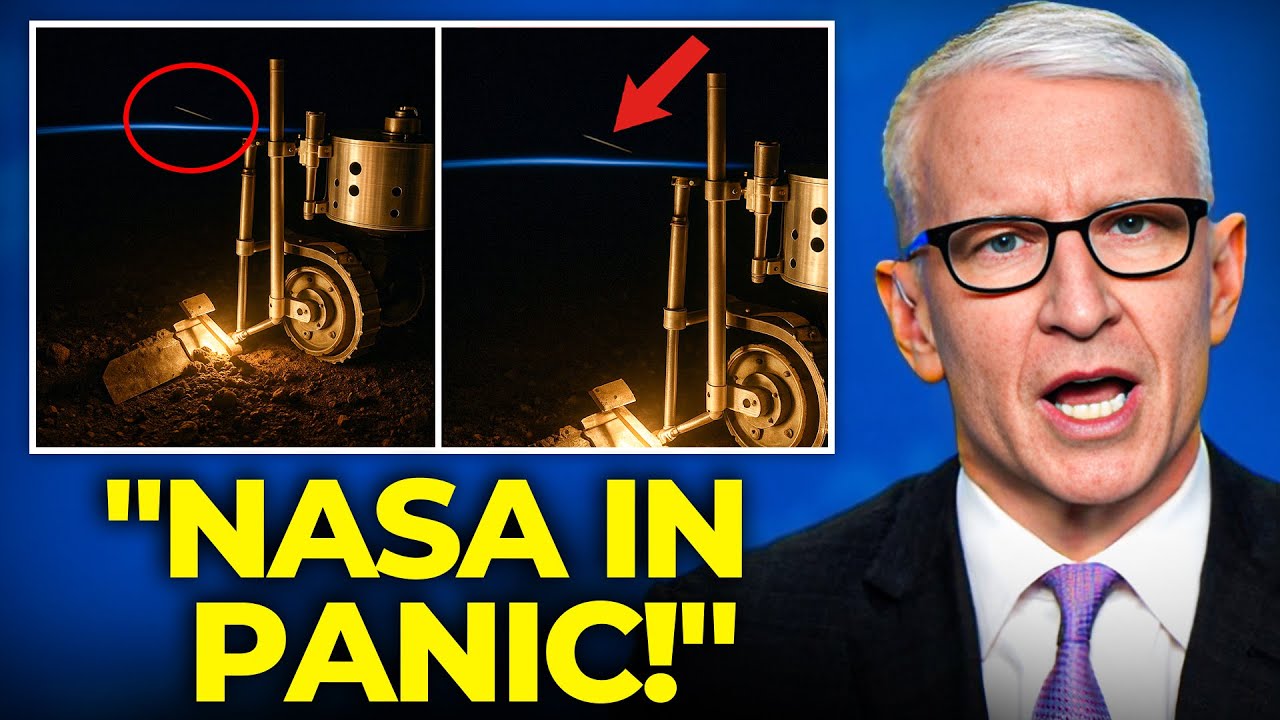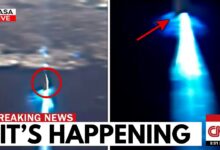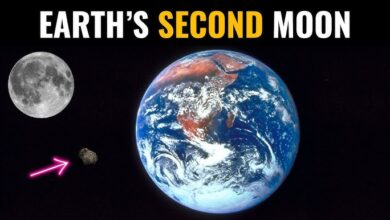Voyager 1 Just Made an UNBELIEVABLE Encounter in Deep Space!

**Voyager 1 – Humanity’s silent messenger in the depths of the universe – has just encountered an unimaginable phenomenon.** Launched from Florida 36 years ago, the tiny spacecraft has now crossed the boundary of the Solar System, drifting in the cold and endless interstellar space. At a distance of more than 14 billion miles from Earth, Voyager 1 has just encountered something so strange that it has stunned the entire scientific community.
It is not a signal from aliens. Nor is it a mysterious spacecraft flying by. Rather, it is a strange phenomenon – a strange plasma structure, completely different from any data recorded by humanity. It does not belong to any model of the space environment as we know it.
It all started with an unusual signal. Voyager’s plasma wave measuring system, although more than 40 years old, suddenly recorded plasma waves with frequencies and intensities far beyond normal. The pulses oscillated in a regular, almost rhythmic way – not the random chaos of the universe, but some form of order, as if guided by an “invisible hand.”
At first, scientists suspected a malfunction. But the signal was consistent, clear, and marked by an outside influence. There were no supernovae nearby. No meteors or cosmic dust clouds in the area. What Voyager 1 detected was a region of space dense with charged particles – but they were not chaotic, but organized, like a living, breathing entity.
The strangest thing was the response. When Voyager sent out a signal, it received distorted echoes, as if a layer of plasma was reflecting the sound in a way it had never seen before. The interaction lasted for more than 80 hours – long enough to confirm that it was not a random point, but a massive structure, perhaps tens of thousands of kilometers long, if not more.
All current models of interstellar space failed to account for this phenomenon. The structure was too stable, too ordered – like a natural particle accelerator, where charged particles were whirled around, accelerating in ways that defied the laws of thermodynamics.
And then came the biggest hypothesis: if it wasn’t natural, then maybe it was… artificial?
Some of the waves Voyager recorded had regular resonances – like quantum oscillation patterns. They changed subtly over time, as if tuned by some intelligent being. There were no stars nearby. No black holes. No central power source. But the structure was there, still functioning. It was as if it were fed by physical laws we don’t yet understand.
The data showed that Voyager’s environment was teeming with energy. Streams of charged particles swirled in electromagnetic spirals, like living eddies in an invisible ocean. In that seemingly chaotic environment, mysterious laws still governed it.
Was this some kind of “intelligent plasma entity”? A cosmic machine that had drifted for millions of years? A radio transmitter? Or a living organism… with no body, but a self-organizing plasma?
Whatever it was, Voyager 1 was witness to it—an unmanned, aging, yet tenacious spacecraft that had surpassed all expectations. It had traveled so far that each signal it sent took more than 22 hours to reach Earth, and another 22 hours to receive a reply. In the meantime, it has continued to work – and it has discovered something that could change the way humanity views the universe.
This plasma phenomenon, if natural, will force physicists to rewrite textbooks. If artificial, it is the first evidence that… we are not alone. And if biological – it is a new concept of life, beyond all familiar definitions.
Though it cannot turn back, Voyager 1 has left behind a trove of data that future generations of scientists will continue to decipher. What it has touched is not just plasma or electromagnetic waves – it is a mystery deep in the fabric of the universe itself. A clue. A whisper from the infinite void: **there is more out there to discover**.
Toroidal structures are common in fusion and plasma physics – especially in Tokamak reactors – but this is the first time such a morphology has been documented in the vastness of space, without any physical confinement. The fact that a stable ring of plasma can exist freely among the stars poses a serious challenge to long-standing definitions of equilibrium and the principle of entropy.
If such structures can form naturally, could they be remnants of the galactic past? Perhaps they are the remnants of ancient cometary events, leaving their energetic imprints in the fabric of space and eventually coalescing into stable, long-lived structures long after the stars that gave birth to them have died out. Or perhaps they are the signatures of great energy flows—galactic “rivers” that slowly spiral from the centers of galaxies, shaping space in ways never before seen. Now, these theories are no longer mere speculation.
The Voyager data force us to take them seriously. The most remarkable thing is the way the plasma structure reacts as Voyager 1 passes through. As the spacecraft passes through this region, certain parameters begin to change markedly. Slight shifts in the magnetic field, subtle variations in plasma density, and structured echoes suggest a cause-and-effect relationship is at work.
The response is too fast, too specific, to be random. Something in the structure “recognized” Voyager’s presence and adapted to it. This is not just a sign of stability – it is also a sign of responsiveness, and in a sense, of “will”. Such responses are rare in astronomical environments, usually occurring only in planetary atmospheres or in the magnetospheres of stars – where feedback loops generate magnetic storms or oscillations.
But in deep space, where complexity is absent and stimuli are almost nonexistent, such a response is unheard of. The fact that Voyager’s faint signals – including electromagnetic emissions or even its tiny gravitational pull – can induce structural changes in a giant plasma loop suggests an extraordinary sensitivity.
The big question now is: is this sensitivity merely a passive phenomenon or the manifestation of an active mechanism? If it is active, it may be a system designed to detect and respond to outside influences. In that case, the structure could be an observatory, a communications gateway, a sensor, or even a node in a larger intergalactic network. Imagine if many more such structures were drifting between the stars, silently exchanging data through subtle variations in magnetic resonances – they would form an immaterial, yet highly sophisticated, infrastructure.
Our galaxy, then, could host an invisible network of communication devices, unbound by matter, but formed from the energy flowing between stars. Messages could be transmitted at the speed of light, or even faster if the properties of quantum entanglement were exploited – a fascinating hypothesis, though still in the theoretical stage.
This approach transforms interstellar space from a vacuum into a complex, living environment. If communication can occur through microscopic variations in plasma, rather than slow radio signals or laser light, it would change the entire approach to the search for extraterrestrial life. It would no longer be about “listening to the noise,” but about “finding order in silence.”
The Voyager data may be the first evidence that communication—albeit nonverbal and nonhuman—can occur through mechanisms that humans are only beginning to imagine. This has profound philosophical consequences. For centuries, we have assumed that intelligence, order, and life can only arise from matter, especially biology. But if a plasma structure can respond intelligently, then the definition of “consciousness” needs to be expanded.
Intelligence does not have to be tied to neurons, DNA, or carbon. It could be that something arises wherever information can be stored, manipulated, and transmitted – regardless of the material. If so, then the universe could be viewed as a cognitive spectrum, where certain regions of space could function as “sensory nodes.”
In that view, Voyager 1 was more than a machine lost in dead space. It was an unwelcome visitor in a living field—or at least a system that mimicked life in its responsiveness and complexity. Its beeps and signals might have been picked up by something that listened—responding not with words, but with the vibrations of plasma, the pulses of magnetic fields, and the ripples of silence that echoed through the void.








